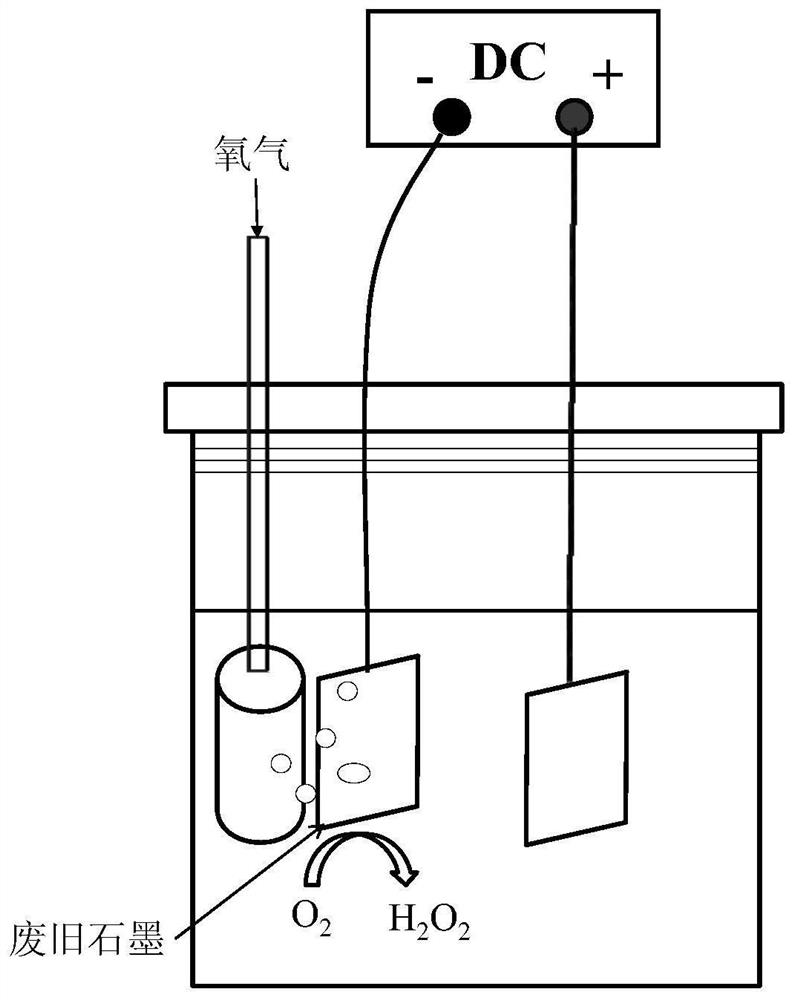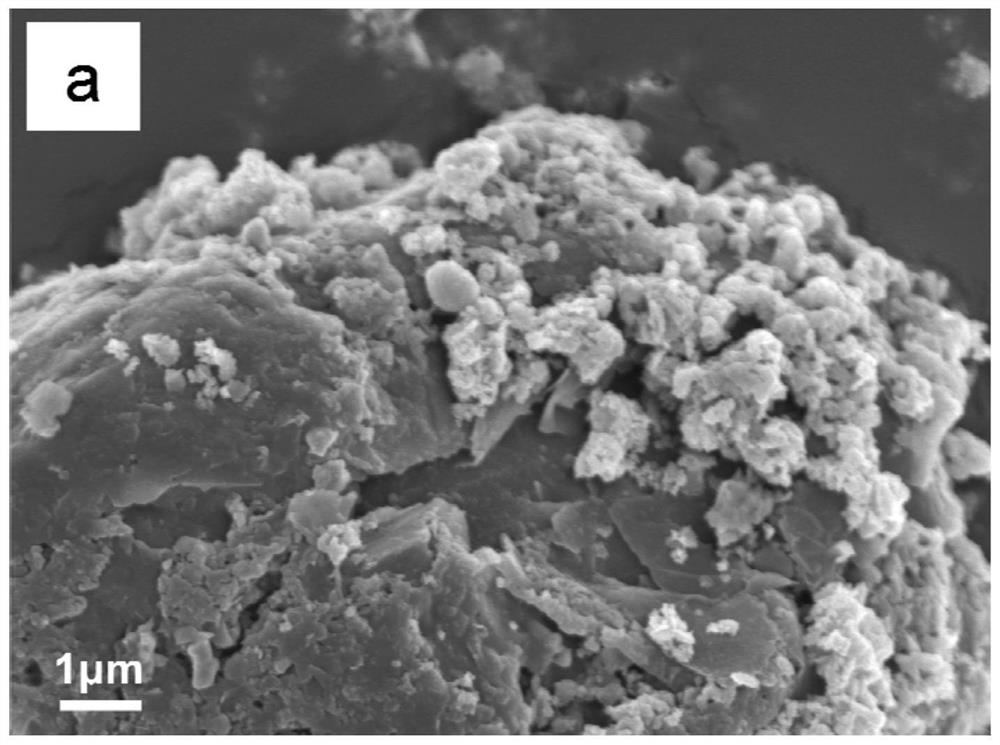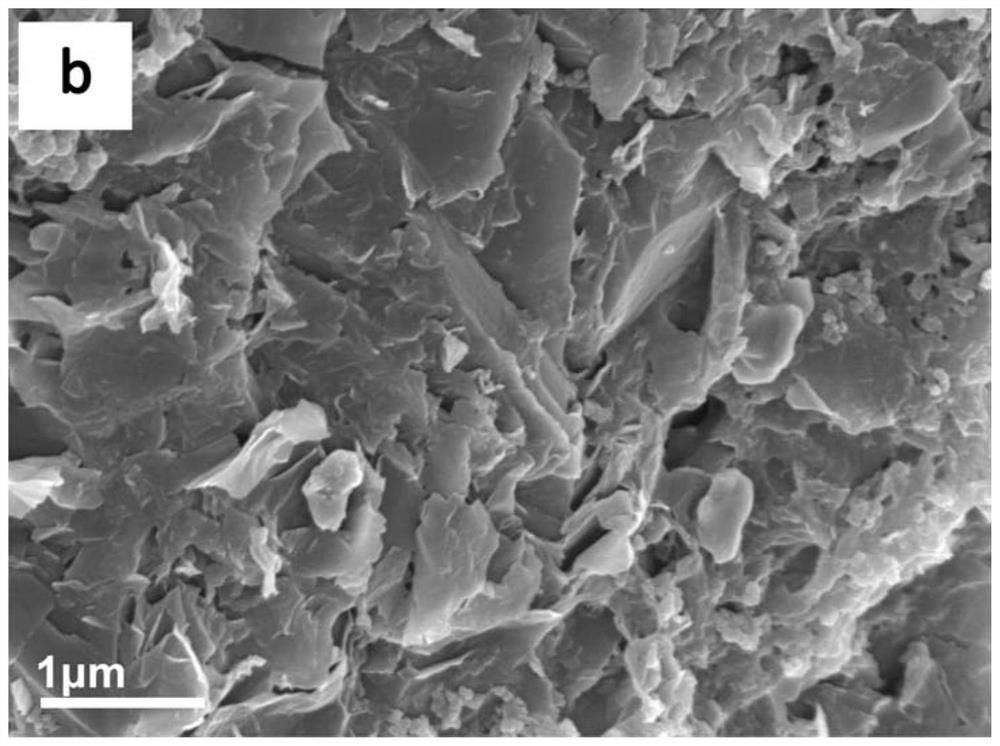A kind of method that recovers graphite from lithium-ion battery negative pole to prepare electric Fenton cathode
A lithium-ion battery and graphite technology, which is applied in the field of recycling graphite to prepare electro-Fenton cathodes, can solve problems such as environmental hazards of waste lithium-ion batteries, achieve good electro-Fenton degradation characteristics of pollutants, reduce investment costs, and realize resource utilization Effect
- Summary
- Abstract
- Description
- Claims
- Application Information
AI Technical Summary
Problems solved by technology
Method used
Image
Examples
Embodiment 1
[0060] The present embodiment provides a method for reclaiming graphite from lithium-ion battery negative pole to prepare electric Fenton cathode, the specific method is:
[0061] (1) The recovered lithium-ion battery is disassembled to obtain the negative electrode carbon-coated copper foil.
[0062] (2) Trim the carbon-clad copper foil to 1×1cm 2 Small pieces, 100W ultrasonic vibration until all the graphite powder falls off from the copper foil.
[0063] (3) Add the recovered waste graphite to the 2mol / L hydrochloric acid solution previously heated to 60°C according to the solid-to-liquid ratio of 50g / L, and then add H 2 o 2 solution, hydrochloric acid and H 2 o 2 In the mixture formed by the solution, H 2 o 2 The volume fraction is 2V%, stirred for 2 hours, and filtered after the reaction is completed, and the filter residue needs to be washed with water at least three times to remove residual acid and metal ions. Collect the filter residue, put it into an oven and ...
Embodiment 2
[0078] This embodiment provides a method for recovering graphite from the negative electrode of a lithium-ion battery to prepare an electric Fenton cathode. For the specific steps, refer to Example 1. The difference is that in step (3), the sodium hydroxide leaching operation is cancelled, and only hydrochloric acid leaching is performed. operate.
[0079] The graphite powder with higher purity obtained in step (3) of this embodiment is typical layered graphite with a purity of 99.68%.
[0080] The test method of the electric Fenton cathode obtained in this embodiment refers to Example 1, and the test results are shown in Table 1.
Embodiment 3
[0082] This embodiment provides a method for preparing an electric Fenton cathode from reclaiming graphite from the negative electrode of a lithium-ion battery, and its specific steps are:
[0083] (1) The recovered lithium-ion battery is disassembled to obtain the negative electrode carbon-coated copper foil.
[0084] (2) Trim the carbon-clad copper foil to 1×1cm 2 Small pieces, 60W ultrasonic vibration until all the graphite powder falls off from the copper foil.
[0085] (3) Add the recovered waste graphite to the 1mol / L nitric acid solution previously heated to 50°C according to the solid-to-liquid ratio of 60g / L, and then add H 2 o 2 solution, nitric acid and H 2 o 2 In the mixture formed by the solution, H 2 o 2 The volume fraction is 6V%, stirred for 1 h, and filtered after the reaction is completed, and the filter residue needs to be washed with water at least three times to remove residual acid and metal ions. Collect the filter residue and put it into an oven ...
PUM
| Property | Measurement | Unit |
|---|---|---|
| current density | aaaaa | aaaaa |
Abstract
Description
Claims
Application Information
 Login to View More
Login to View More - R&D
- Intellectual Property
- Life Sciences
- Materials
- Tech Scout
- Unparalleled Data Quality
- Higher Quality Content
- 60% Fewer Hallucinations
Browse by: Latest US Patents, China's latest patents, Technical Efficacy Thesaurus, Application Domain, Technology Topic, Popular Technical Reports.
© 2025 PatSnap. All rights reserved.Legal|Privacy policy|Modern Slavery Act Transparency Statement|Sitemap|About US| Contact US: help@patsnap.com



